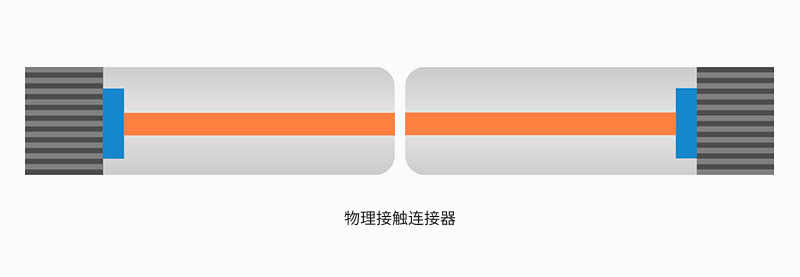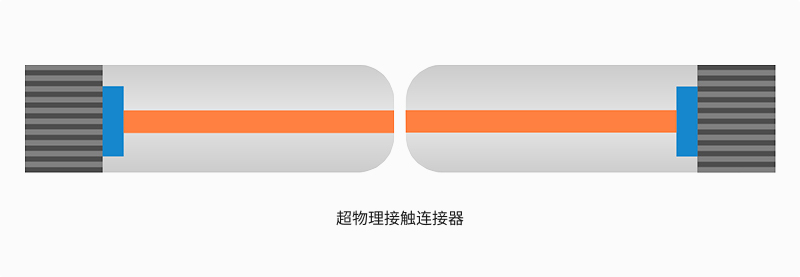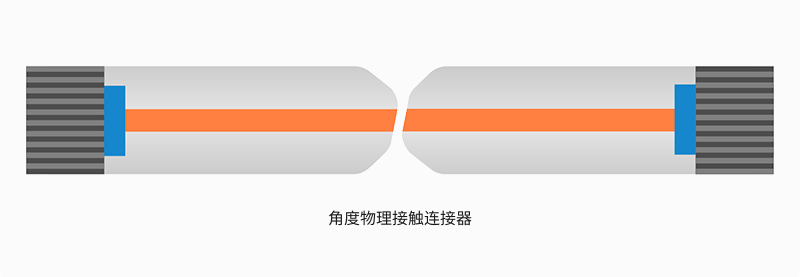The sleeve of a fiber optic connector is used to connect with the transmitting or receiving end of another fiber optic. When the fiber optic connector is installed at the end of the fiber optic, light will reflect back towards the light source, affecting signal transmission. In order to improve the transmission efficiency of fiber optics, engineers have introduced sleeve polishing and polishing technology. PC, UPC, and APC are the three types of polishing methods for the inner sleeve of fiber optic connectors. This article will introduce these three polishing types of fiber optic connectors and the differences between them, hoping to provide some help for your understanding of fiber optic connector polishing technology.

Figure 1: Polishing methods for fiber optic ceramic ferrule
PC refers to physical contact. It is the most common polishing type on OM1 and OM2 multimode fiber optics. The mating endface of a PC fiber optic connector is a convex arc structure, with a flat interface section as the result of spherical polishing, which can effectively reduce the air gap in the fiber optic assembly and make the two fiber endfaces physically contact. Therefore, the typical return loss of a single-mode fiber optic connector polished by the PC method is -40dB, higher than the return loss of the original flat polished style (usually -14dB). However, this polishing method of PC fiber optic connectors has become obsolete and is continuously evolving into UPC connectors.

Figure 2: PC fiber optic connector
UPC, or ultra-physical contact, is evolved from PC fiber optic connectors. Its endface polishing performance and surface finish are better, and the endface is a dome shape. UPC fiber optic connectors depend on machine polishing, and its return loss is higher than that of PC fiber optic connectors, reaching approximately -50dB or higher. Also, when using UPC fiber optic connectors, it is necessary to ensure that the laser specifications can handle the produced return loss. Another thing to note is that repeated connection and disconnection will cause the quality and performance of the UPC fiber optic connector endface to deteriorate.

Figure 3: UPC fiber optic connector
APC stands for angled physical contact. Unlike UPC fiber optic connectors, the endface of APC fiber optic connectors is precisely polished and forms an 8-degree angle with the fiber optic cladding, which attenuates reflections. This reduces most of the return loss to be reflected into the cladding, instead of interfering with the transmission signal and damaging the laser source. The typical return loss of an APC fiber optic connector is -60dB, and it is usually used in cable television and early CATV network applications. The connector has a tilted endface, which can improve the quality of the television signal, mainly because TV signals are analog light modulations. When the coupling surface of the connector is vertical, the reflected light returns along the original path.

Figure 4: APC fiber optic connector
PC, UPC, and APC fiber optic connectors differ in color, performance, and application. See the following details.
Appearance
As mentioned in the previous paragraphs, both PC and UPC fiber optic connectors belong to the angle-free polishing method, and the endface is curved, except that the UPC fiber optic connector optimizes the endface polishing and surface finish on the basis of the PC fiber optic connector. Therefore, the radius of the endface is slightly larger, forming a dome-shape, while the APC fiber optic connector is polished with a tilted surface, and the endface is usually polished at an angled 8 degrees.
Another noticeable difference is the color of the fiber optic connectors. We can distinguish their types by color. Generally, PC and UPC fiber optic connectors are blue, and APC fiber optic connectors are green. For example, LC APC Single-mode Fiber Optic Patch Cable, both ends of the fiber optic connectors are green, while the fiber optic connectors of LC UPC Single-mode Fiber Optic Patch Cable are blue (as shown in the figure below).

Figure 5: LC/UPC connector VS LC/APC connector
Performance
In the past, due to the design of fiber optic connectors having a certain gap, it was difficult to achieve low insertion loss for APC fiber optic connectors. Nowadays, with the advancement of polishing technology, the performance of APC fiber optic connectors has been improved, and the difference in insertion loss between APC and UPC fiber optic connectors has also been reduced.
In terms of return loss, their different polishing endfaces result in different light reflections. UPC fiber optic connectors will directly reflect any reflected light back to the light source, but APC fiber optic connectors reflect the reflected light into the cladding at a certain angle, instead of reflected directly back to the light source. Therefore, their return loss values are different. According to industry standards, the return loss values of PC, UPC, and APC fiber optic connectors are -40dB, -50dB, and -60dB or higher, respectively. The higher the return loss, the smaller the reflection, so the better the fiber optic connector performance. Therefore, the performance of APC fiber optic connectors is superior.
Application
APC fiber optic connectors are more suitable for applications in areas with high return loss requirements, such as for RF video signal transmission, especially for FTTx applications, passive optical networks and other WDM system applications that use high bandwidth.
For those fields that do not require high return loss, UPC or PC fiber optic connectors are a good choice. PC fiber optic connectors are very suitable for use in telecom operator networks, while UPC fiber optic connectors are widely used in digital TV, telephone and data systems.
 What Are the Applications of PLC Splitter?
18 Aug 2022
In the passive optical network, the optical splitter plays an important role. It realizes the sharing of a passive optical fiber network by multiple end users. PLC splitters have good performance and ...
What Are the Applications of PLC Splitter?
18 Aug 2022
In the passive optical network, the optical splitter plays an important role. It realizes the sharing of a passive optical fiber network by multiple end users. PLC splitters have good performance and ...
 Call us on:
Call us on:  Email Us:
Email Us:  8 Jinxiu Middle Road,
8 Jinxiu Middle Road,